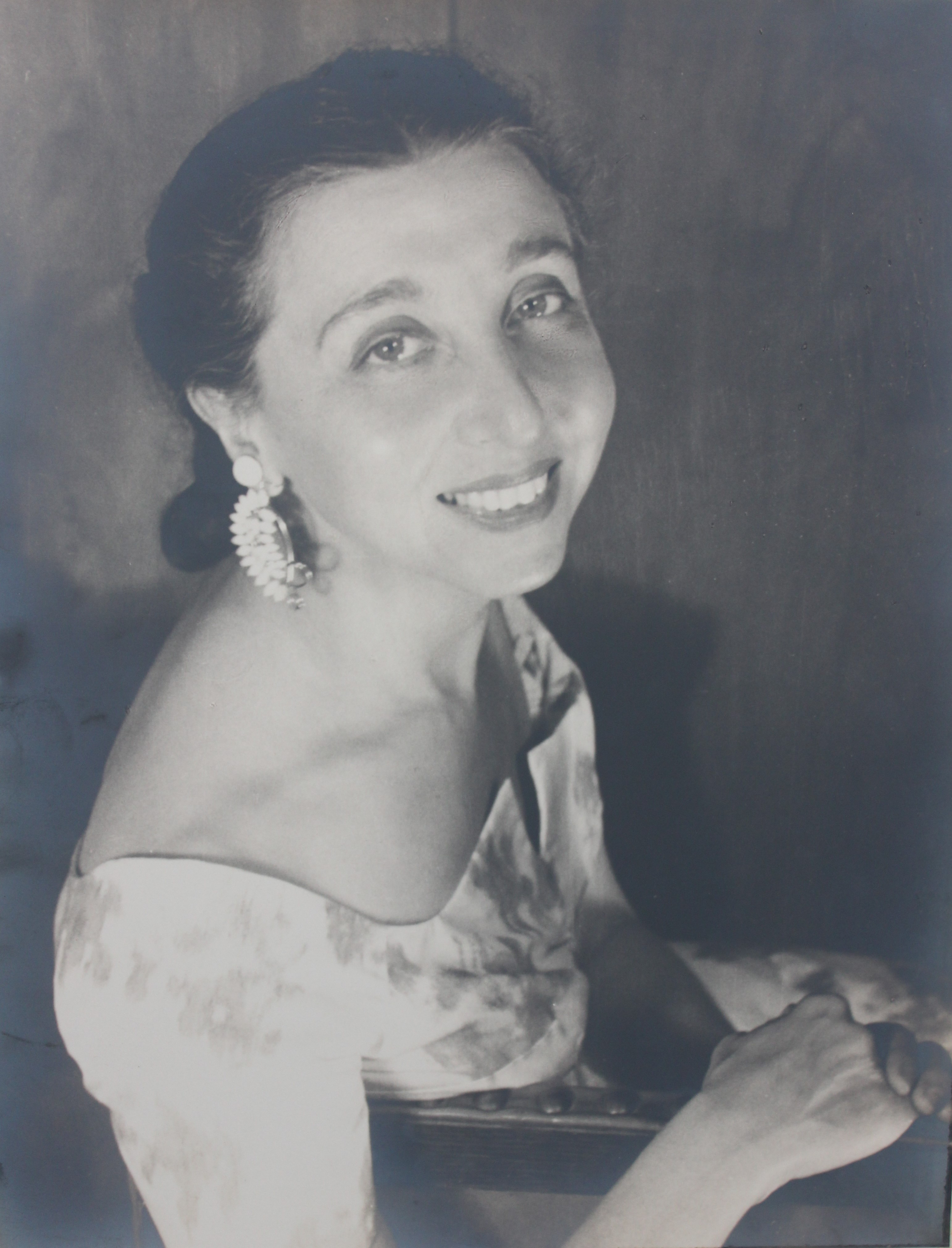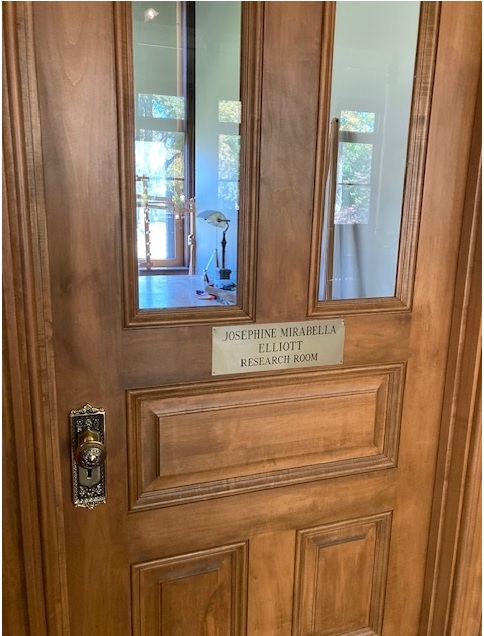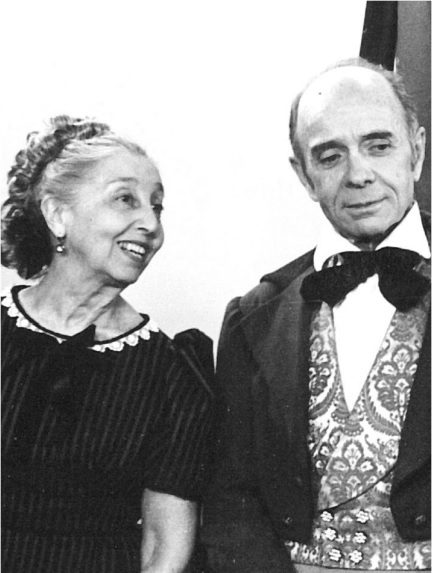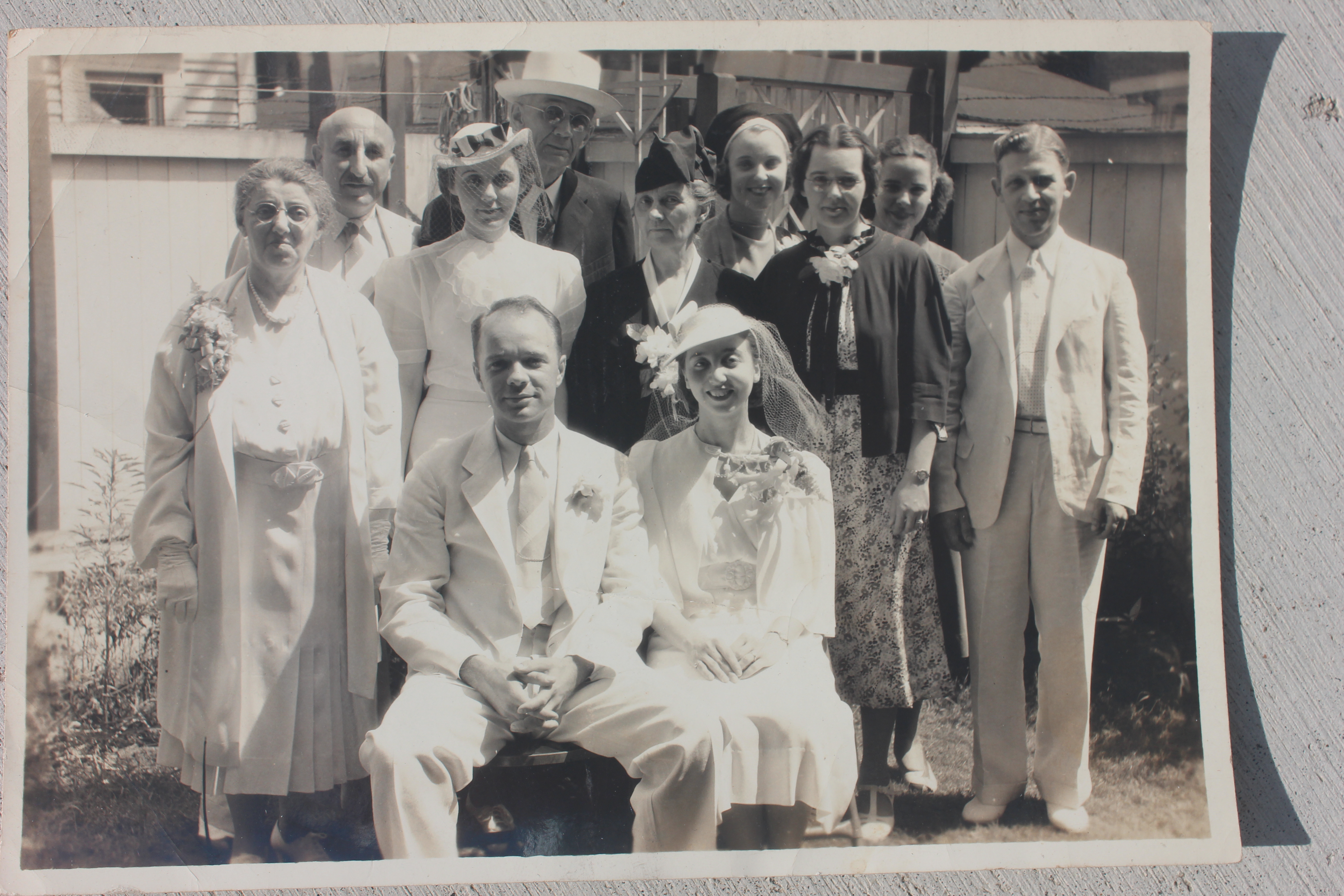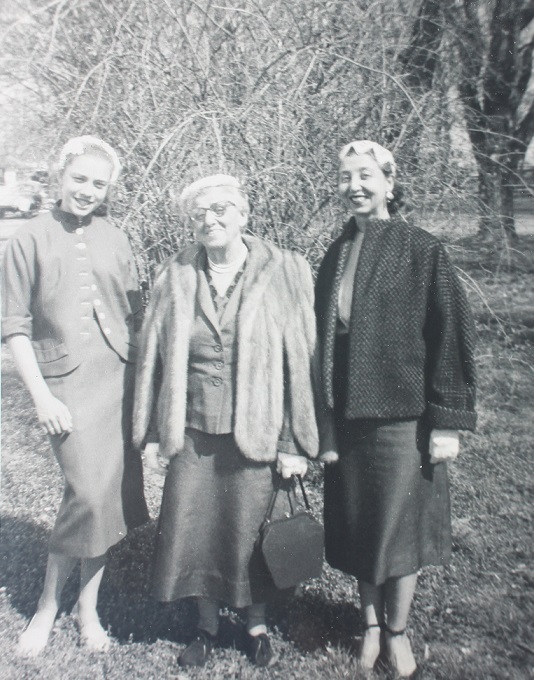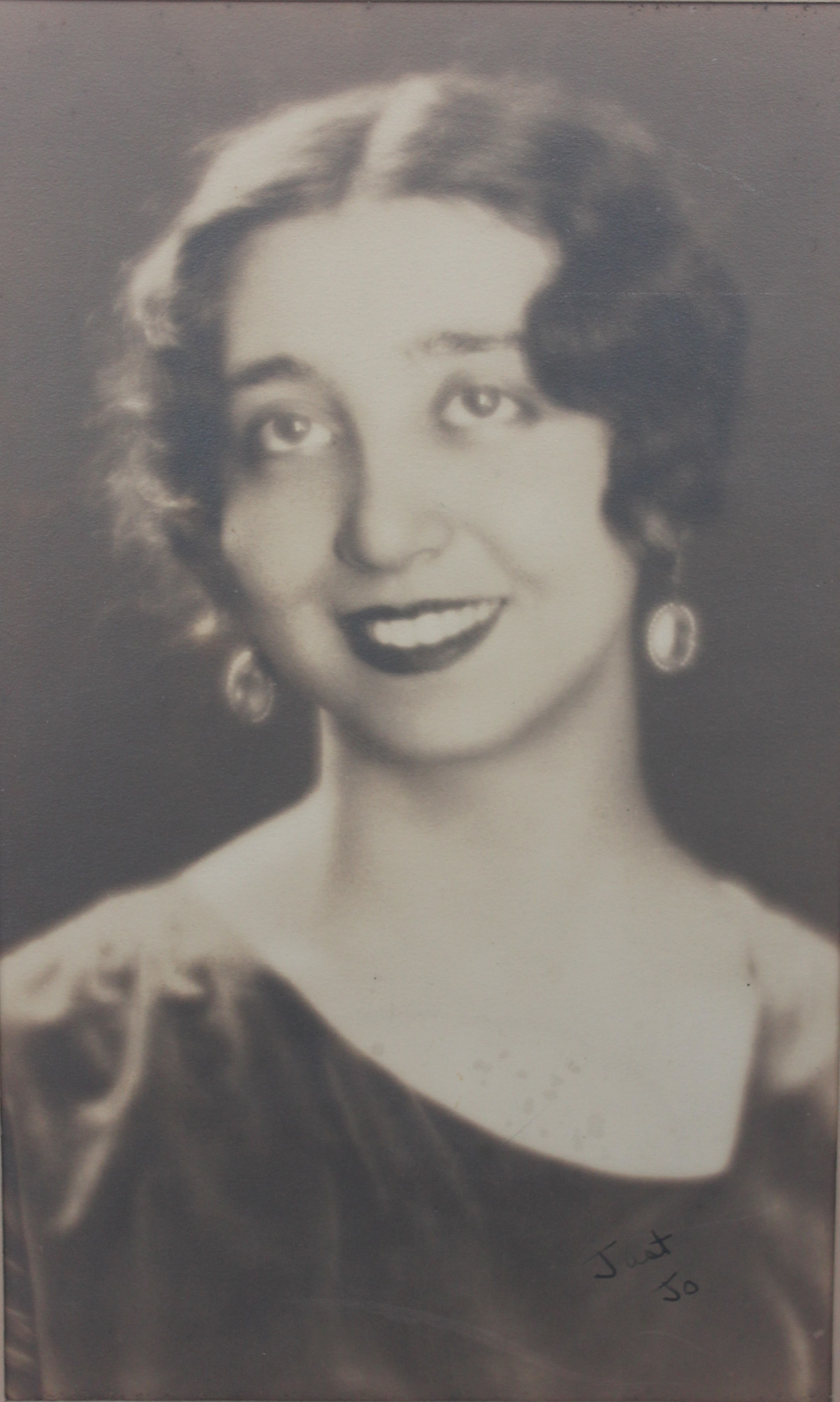
Associated with the Working Men's Institute (WMI, established by William Maclure), Josephine also wrote articles on various aspects of the history of New Harmony; these are described below in the Publications section. Earlier, she was a librarian and teacher in schools in Chicago, Mt. Vernon, Indiana, and Evansville, Indiana.
This article reviews the high points of Josephine's childhood in Chicago, her trips to Europe, and life at the University of Chicago. Included are portrayals of her parents, her husband John as an archaeologist and then farmer and civic leader in New Harmony, their daughter Claudia, and others. Much of the information was gleaned from the voluminous Elliott Family Papers at WMI. The article concludes with an annotated list of Josephine's publications.

A really good photograph of Josephine Mirabella was taken about six years before her marriage to John Bennett Elliott. The image appears in the 1932 yearbook, Cap and Gown, of the University of Chicago. A larger copy of the same image, shown here, includes Josephine's inked-on note: Just Jo, suggesting Just So
.
She was born on 23 April 1912 to Rosamond (Rosa) Libonati Mirabella and Dr. Salvatore Mirabella. The family resided in an apartment that included Dr. Mirabella's office, in one of the many Italian neighborhoods in Chicago, then known as the settlement of Toscani
. The location, centered around 24th and Oakley, is now known as Little Tuscany
and Heart of Italy
.
Josephine attended the Pickard Elementary School, graduating in the 1924 class of 68 students. In the graduation program, Josephine Mirabella's ‘Military Dance’ made a great hit with the audience.
When Josephine was about eleven, her mother began taking classes in French, English, and Italian at the University of Chicago. This she continued until 1929, without receiving a degree. Beginning in 1925, Josephine attended the renowned University of Chicago High School. She graduated in 1928. The school yearbook for that year, The Correlator, includes a picture of Josephine, accompanied by these words:
Josephine is the earnest little brown-eyed damsel who always has the air of being on the way to do something important – and as a matter of fact, she usually is. Perhaps her studies receive most of her attention, but she is a good athlete, having made both class and Pep teams, and a supporter of several clubs. If she gets along as well in life as she has at U-High, they can start cutting a new niche in the Hall of Fame.
Her activities for the four years at U-High are then listed: Crafts Club (1,2,3); Music Club (4); French Club (2,3,4); Class Hockey (2,3,4), Pep Hockey (4); Class Basketball (2,3), Pep Basketball (3); Class Baseball (2,3), Pep Baseball (3).
Many graduates of the University of Chicago High School enrolled in the University of Chicago, one of America's most prestigious universities. Josephine did so, and her name occurs in several articles in the student newspaper, The Daily Maroon. One of these is headed Italian Department Gives Plays Tonight
. It announces that Scapigliati
, an association formed by students studying Italian, will present three plays in the evening of 3 June 1931, and that one of the assisting student directors is Josephine Mirabella.
On 14 June 1932, Josephine received the degree Ph.B. degree in Romance Languages. (Ph.B.
abbreviates Bachelor of Philosophy
.) Early in 1933, she participated again in a play, Scampolo
, by Dario Niccodemi, this time as an actress (The Daily Maroon, 17 January 1931, page 3).
Correspondence preserved in WMI shows that Josephine, being concerned about future employability, decided to become qualified to teach in public schools. Her Certificate of Graduation in One Year for College Graduates is dated 9 June 1933, from the Chicago Normal College (now Chicago State University College of Education). She taught in the Chicago Public Schools during 1935-1938.
She also continued studies at the University of Chicago, and on 12 March 1935, she received the degree Master of Arts in Italian. In 1937, she played the leading role in another performance of Scampolo
, a character described as a vivacious waif in twentieth century Rome who develops rapidly from a happy-go-lucky child of the street into a romantic young woman.
(The Daily Maroon, 29 April 1937, page 1) The play can be read online: Il Romanzo di Scàmpolo.
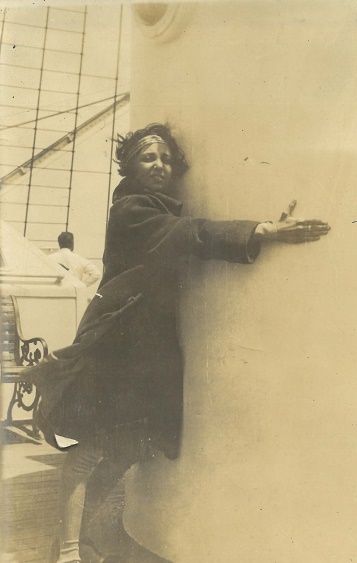
Josephine's 1930 travel diary, My Trip Abroad
, includes her itinerary:
| Date | Destination | Lodging |
|---|---|---|
| July 1-14 | Paris | Hotel Wagram |
| July -17 | Berlin | Central Hotel |
| July 21 | Vienna | Hotel Metropole |
| July 27 | Budapest | Hotel Gellért |
| July 31 | Venice | Danieli Hotel |
| Aug 5 | Milan | T. Cook & Son |
| Aug 13 | Florence | T. Cook & Son |
| Aug 21 | Rome | T. Cook & Son |
| Aug 28 | Naples | T. Cook & Son |
| Sep 12-13 | Termini Imerese | S. Mirabella |
Josephine attended a papal audience with Pope Pius XI — probably similar to the regularly scheduled modern event: Papal Audience - Vatican Rome.
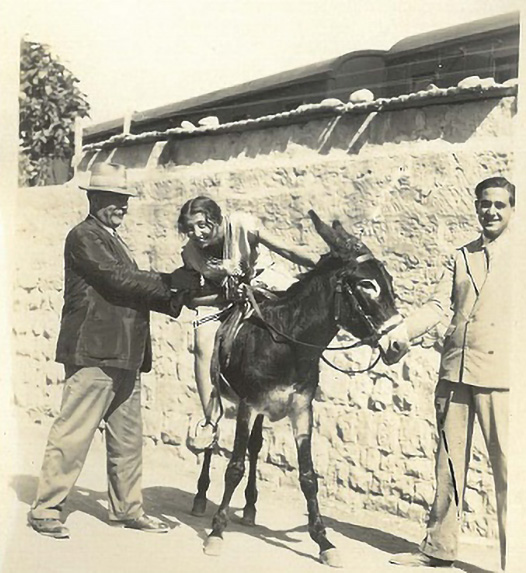
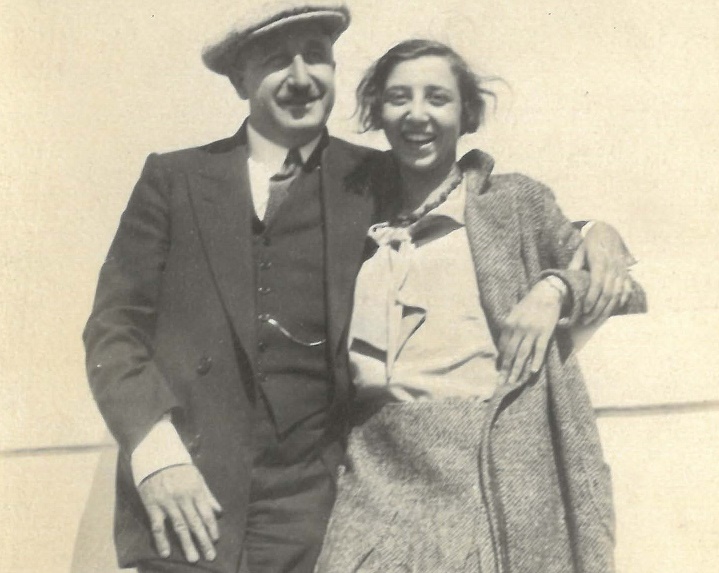

Folder 343 in the Elliott Family Papers contains diaries, published by the University of Chicago, in which Josephine penciled brief notes. Each of the four diaries, covering 1929-1932, measures 2.75"×4.5" and is gilt-edged with leatherine binding. Among the most common words hastily written by Jo (as she was called) are these: beach, dance, dinner, dunes, library, movie, nite, party, riding, rowing, show, skating, study, swimming, tennis. Names of boyfriends appear throughout, especially Jack [Littler], Everett [Ramsey], and, beginning in the entry for 13 October 1931, John [Elliott].
Everett (Evie
) and Jo repeatedly had a fight
but then made up within a day or so. They corresponded extensively until Everett's death in 1982. In 1970, one of his letters epitomizes his regret: We make our mistakes as we go along and suffer for them, thereafter . . . I made my biggest mistake 40 years ago ...
In the previously mentioned 13 October 1931 jotting, Jo wrote Snubbed Evie while talking to John Elliott.
After that, until the end of the diary, Jo's entries reveal that she fell deeply in love with John, and he with her. Many of Jo's daily entries consist of a single expression: John.
From 1933 until their marriage in 1938, and thereafter, Josephine and John wrote many letters to each other. Many of them are now kept in the Elliott Family Papers. Aside from the longing that Jo and John felt for being together when they were not, the impassioned letters from 12 June to 6 July, 1933, indicate that John was one of the excavators at an archaelogical site in Rock Island County, Illinois. Although one of the letters mentions the William French farm as the location of the site, a more accurate description seems unavailable. It seems likely that the work was associated with University of Chicago archaeological survey mentioned on an Archaeological Survey Form, 1933. John's letters were sent from Illinois City, a tiny settlement just across the Muscatine River from Muscatine, Iowa. Interestingly, the date of John's graduation with a Ph.B. degree from the University of Chicago (having majored in anthropology) was 13 June 1933.
John's letter dated 6 July 1933 notes that You know a man can be objective about his science — but his woman is another thing.
Concerning Jo's forthcoming visit to the camp, he writes that she should wear only old things, the environment being ruinous for nice things.
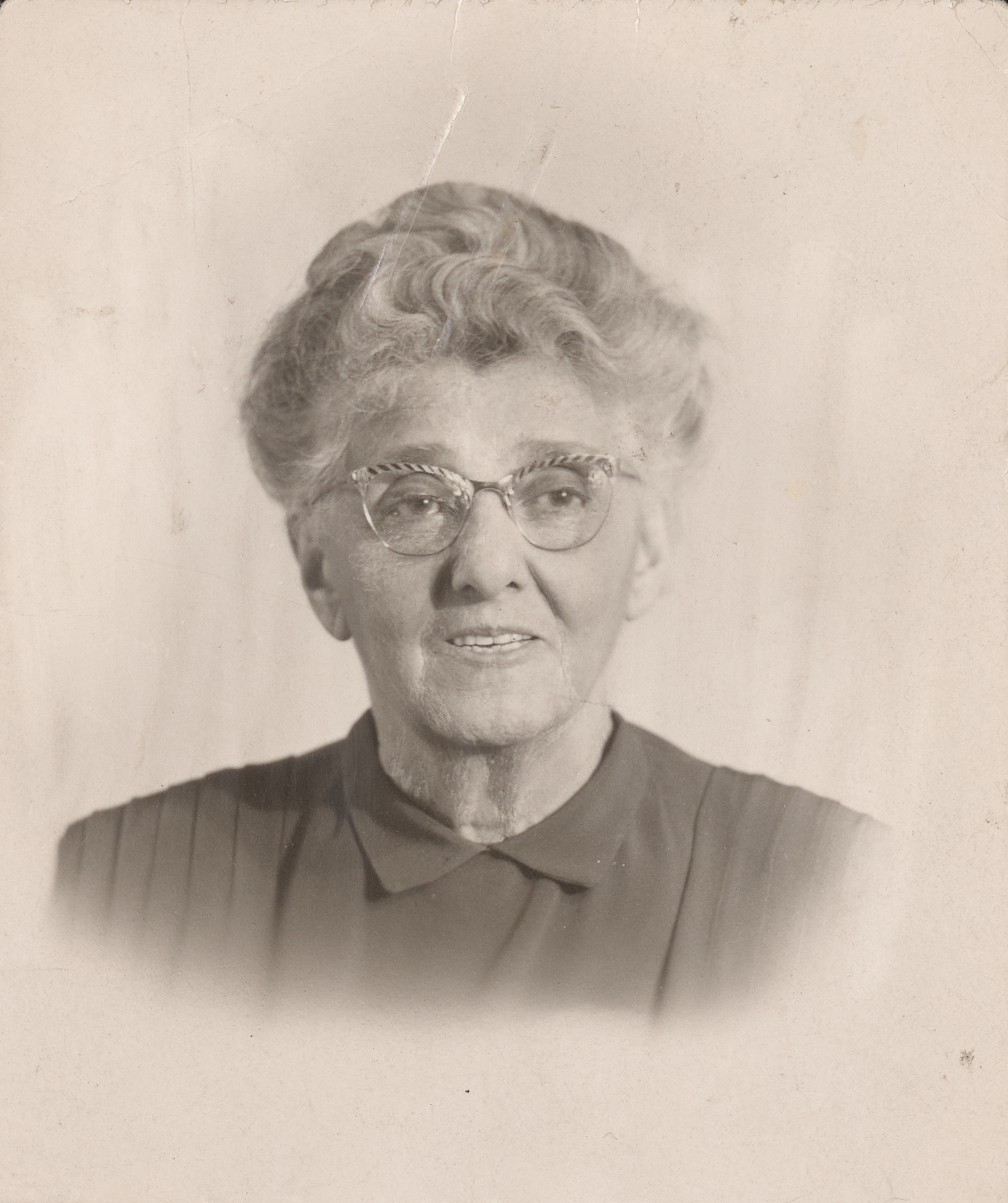
Josephine's mother, Rosamond (Rosa) Libonati Mirabella, was born in Chicago on 24 August 1885. Her parents were Ernesto Michael Libonati (1862-1935), born in the southern Italian town of Anzi, and Flora (Florence, Florina) Annite (Pellettieri) Libonati (1863-1953), born in nearby Laurenzana.
The Rosamond Mirabella Papers, archived in Special Collections at the Chicago campus of the University of Illinois, is the primary source of information regarding Josephine's mother. These papers, including letters, photos, newspaper clippings, and an oral interview, served as a basis for a detailed account of Rosa's life and work in Women Building Chicago, 1790-1990 (WBC), a 1176-page book that can be downloaded from the Chicago Women's History Center: Women Building Chicago (this may take awhile to download).
Rosa was proud of her aristocratic heritage, as recorded in an interview (cited in WBC, p. 592): the Libonati's saw themselves as aristocracy.
In 1927, Rosa was a founding member of the Chicago Italian Woman's Club and served as its second president. When that club became affiliated with the Illinois Federation of Women's Clubs, Rosa served, as various times, as director, vice-president, and historian. She was co-founder of the Pickard School Parent Teacher Association, where Josephine went to school and where Rosa sometimes substituted as a teacher.
Beginning in the 1930s, Rosa became the leader of the women's auxiliary of Mother Cabrini Hospital, where her husband was the chief surgeon. She remained active in Chicago women's club activities well after Josephine had herself become a teacher. Indeed, in 1962, Rosa was congratulated by Mayor Richard J. Daley when she was selected for the Senior Citizens Hall of Fame.
Although Rosa's family were of the Roman Catholic faith, her parents had sent their youngsters to public schools instead of Catholic parochial schools. Rosa, in turn, had educated her daughter in the neighborhood public schools and private... While proud of her Italian heritage, and nominally interested in the Catholic parish in her neighborhood, Mirabella believed in the importance of public education.
(WBC, p. 594)
Among the letters that Rosa sent to Josephine in 1938 are several on the letterhead of the Illinois Federation of Women's Clubs. The stationery includes names of officers in the Department of Work, with Mrs. S. F. Mirabella as chairman of the Juniors Committee. Rosa's letters to Josephine typically open with Dear Baby
and close with lots of love to you and John, Mother.
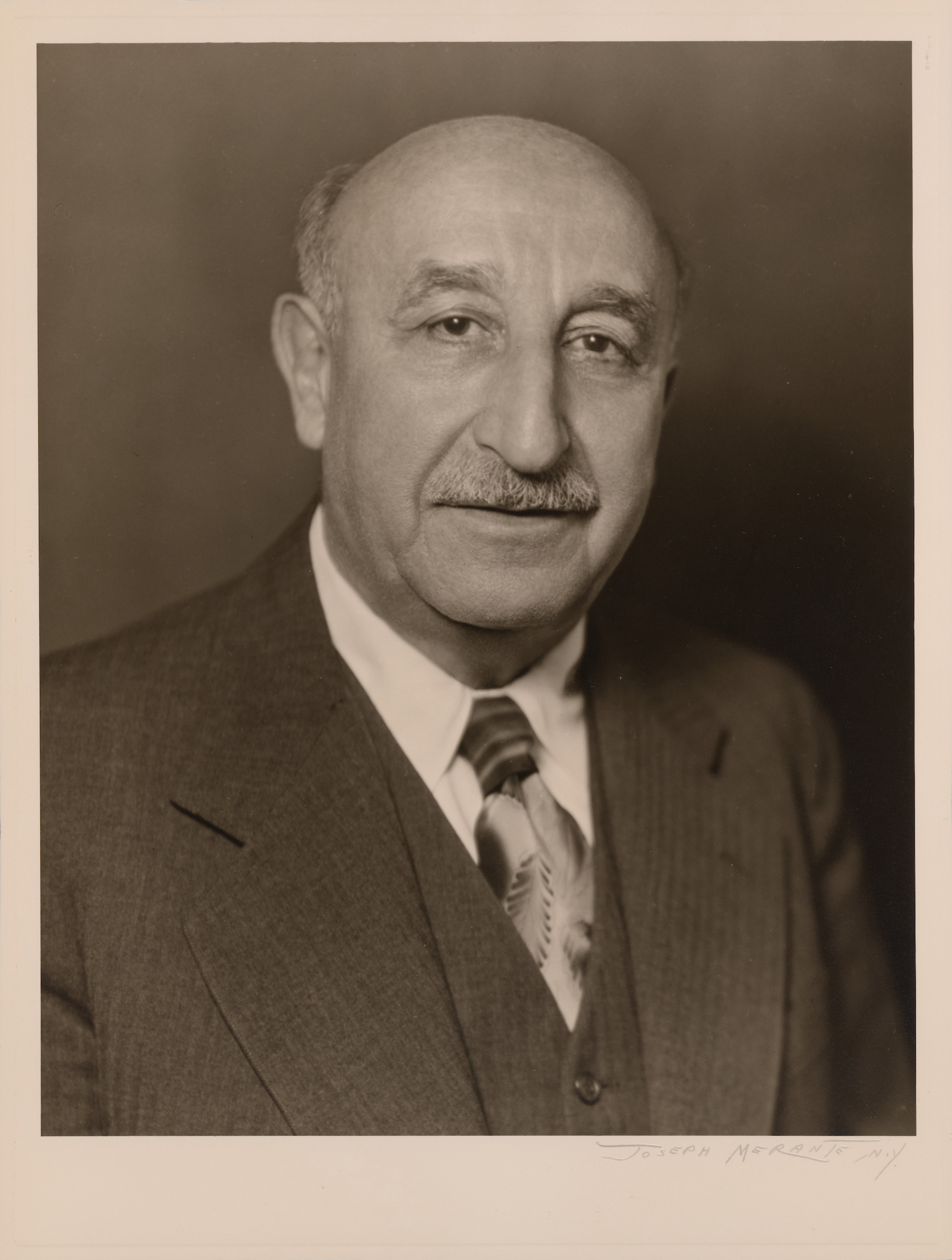
Josephine's father, Salvatore Francis Mirabella, was born 17 March 1884 in Termini Imerese, Sicily. He immigrated to the United States in 1892 with his parents, Joseph and Josephine Mirabella, and in 1907, he graduated from the University of Illinois College of Medicine.
Dr. Mirabella and Rosa were married on 30 July 1910, the couple having overcome the biases their families shared against the match; Sicilians and Neapolitans were wary of each other.
(WBC, p. 592) According to the 1945 edition of Who's Who in Chicago and Illinois, Dr. Mirabella became chief surgeon of the Mother Cabrini Memorial Hospital in 1921. The hospital was originally named the Columbus Extension Hospital, located in the Italian neighborhood in the Near West Side of Chicago, not far from the Mirabella residence.
In 1928, Dr. Mirabella moved his family to a new and larger apartment in the same Heart of Italy
neighborhood. Dr. Mirabella again had one of his medical offices in the apartment where ‘the dining room with its long window bench plus the dining room chairs, served as a waiting room while we dined in our roomy kitchen except on holidays.’
(WBC, p. 593) The address of the apartment was 2425 S. Oakley Avenue. Dr. Mirabella's health failed during the late 1950s, and he recovered from a surgery in Havana, Cuba. His death came from heart failure in Chicago on 8 January 1962.
In October 1989, Josephine wrote a tribute to her father. A typescript preserved at WMI is headed, Written for use in establishing the Mirabella Achievement Award at the University of Southern Indiana, Evansville, Indiana.
A portion of the content is quoted here:
Dr. Mirabella took care of a huge practice. His daily schedule included early morning operations at the hospital; midday office hours at his near North Side office; late afternoon office hours at home; in between, house calls, baby deliveries and emergencies. Though a general practitioner, he was a skilled surgeon, obstetrician and diagnostician. While receiving many offers of staff appointments with prestigious teaching hospitals, he chose to serve the people he had started out with. These were foreign-born Italians, Poles, Irish, Lithuanians, and their families; people who worked in the factories and machine shops of the city, who were poor and couldn't always pay for the service. They were, however, people who appreciated what this country had offered them, and realized that the hope for their children lay in education.
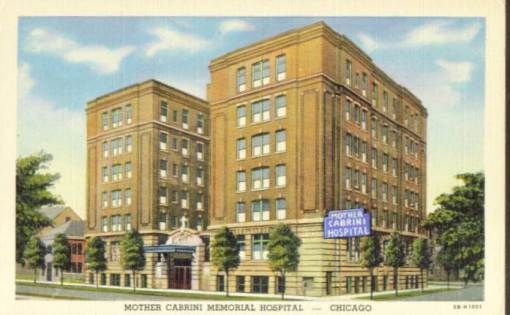

Today we located and mapped several mounds. Boy we're really getting into tough work now. It was awfully hot today ... Getting plenty browned up. Jo — I'll bet I can match you.
25(?) October 1935, John to Jo, from Champaign, Illinois
John has just returned from being in Chicago with Jo and, knowing he will someday be a farmer, is miserable about his return to graduate studies in agriculture at the University of Illinois in Champaign. I'm really awful sick of going to school and will be mighty glad when this training period is over and things can take a more definite shape toward the long-awaited union of our spirits and bodies in marriage... What a red-letter day it will be when we can say — on such-and-such a date will be married... The returns from examinations began to come in today. My first one in animal nutrition was satisfactory — a grade of ninety-four. Ironically enough the fellow who sat next to me in the exam and copied one of my problems got a grade of ninety-nine... Thwarted love takes such devious paths doesn't it dearest. Goodnite. Grayly, John.
27(?) October 1935, John to Jo
This 3.3-page letter in John's always-very-neat handwriting continues his gray mood. He writes, ...you are going to be the defenseless target of some deeply penetrating missiles of incurable love. The kind of projectiles that worm their way deep into your soul and build up a dependence in you for a constant repetition of same.
Among the projectiles was their Catholic-and-Protestant marriage problem. John writes, You recall the article in the Atlantic that you read in regard to the attempted adjustment of the Catholic vs Protestant problem in the case of the marriage of Lord Howard of Penright and the Italian princess? Well I have the second installment here now and in it the paper is concluded...it is interesting peculiarly to us. Perhaps our adjustment will be different but the various possibilities are illuminating.
[The two-part article in The Atlantic Monthly begins with A Roman Courtship
, by Esmé Howard (pen name of Lord Howard), in the September 1935 issue. The second installation was by Rome and Tobago
, in the December 1935 issue.]
27(?) February 1936, John to Jo
This letter is one of several that refer to Jo's frustrations as a teacher in Chicago, and as usual, it reveals John's penchant for wordsmithing....My Boo Boo, your letters are so like you now that you do not have the aggravations and vexations of teaching. They are so natural and of improved literary quality that they will serve as a historic barometer of the trying periods of your life when our "famous" correspondence is published at some future date.
(The correspondence published here is a small fraction of the collection in WMI.)
(Editorial note: In the previous paragraph and in the sequel, primary quotation marks appear as and
, and internal quotations with a slightly different style: ", rather than ' ; thus, double quotes appear as in the original letters.)
4 December 1937, John to Jo, from Island, Kentucky
Dear Jo — It seems an unreal and dramatically sudden chain of events that finds me — recently a restaurant manager in Chicago, transmuted to an archaeologist in a tiny coal-mining town in Kentucky. But yes! it is me I'm sure, for I look at your picture and it performs the same old magic, so perhaps I had better give you some of the intervening links... I met Bill Haag (State Supervisor of W.P.A Archaeology & Curator of Museum of Archaeology & Natural History at the U. of K.) ... My working crew is composeed of 30 men of which two crews are composed working alternate days. They are all coal-miners and fairly rough-and-ready but damn good-hearted and willing. You have heard I suppose of the poverty and misery of these Kentucky coal-fields — well I'm right in the heart of the worst area.... I got the room my predecessor occupied, but only with great difficulty and solemn assurances that I wasn't a "drinkin man". Like all poverty-ridden places, especially mining towns, there is a great deal of drinking and drunkeness here so I can't say as I blame the landlady. They don't drink Seagrams V. O. or Hill & Hill here — it is powerful wildcat moonshine at $5.00 a gallon.
(Other correspondence identifies the restaurant of which John was the manager as a Chicago Loop outlet of Childs Restaurants).
10 December 1937, John to Jo, from Island, Kentucky
It was very lonesome down here the first few days but am now getting to feel quite at home. I think that if I was allowed sufficient time I could adapt myself to any environment or company. Don't consider it as bragging but don't you think it unusual that I could be thrown among a bunch of illiterate miners all older than me as a boss and be accepted as a "reglar guy", as I overheard one remark... You mentioned government red tape — you have no conception of all the blank forms and rules and regulations to be observed on this job. There seem to be all manner of stupid mistakes and slipups whenever a payroll goes thru or a requisition is issued for supplies... Good news — I bought a new Dodge 1 1/2 ton truck. It's a beauty and already I have put 125 mi. on it in two days on purely business trips... Furthermore since I'll ultimately be going to the farm it will exactly meet my requirements... The roads down here become impassable without chains as soon as the ground thaws a little. Can you imagine cars sliding off the road sideways into the ditch while not even in motion?
In this letter, John describes Dr. Webb: He is considered as quite an archaeologist by himself.
Dr. Webb is remembered as an excellent organizer who did not care much for archaeological details. He was a master assigning the right people for the right jobs, and his memory is honored by the University of Kentucky with the name William S. Webb Museum of Anthropology. (Among those who worked under his leadership, he was called bull-neck
.) This letter indicates that John foresaw, several years before the end of WPA, that he would be moving to the James Elliott Farm in New Harmony, a historic site described below.
26 May 1938, John to Jo, on letterhead of Works Progress Administration in Kentucky
Darling Boo: I'm going to scratch off a brief note now before going to bed. I still have no typewriter... Today we found two spectacular finds from an archaeological standpoint. They consisted of two deer-bone atlatls or spear-throwers—a very unusual implement in these parts and of great significance. Both were included in graves.
Further on, John writes, Jo, I want our wedding uncluttered by a lot of collateral relatives. All due respect to your family's desires, I want only the immediate ones present...Remember this is our wedding... More later Boo dearest, Yours alone, John.
31 May 1938, John to Jo, from Island, Kentucky
My recent spectacular "finds" have excited great enthusiasm at headquarters... Of course the objects themselves aren't spectacular, but their meaning is highly so.... An interesting infant burial was found today in which the body had been interred in a large terrapin shell. We went to elaborate pains to preserve all the details for possible future museum exhibition. The fame of this site has seemed to spread all over eastern Kentucky for we continually have numbers of visitors from considerable distances.
With his wedding to Jo just two months ahead, John responds to itemized parts of the Catholic dispensation form that he reluctantly agrees to sign:
(1) (a) "Not to interfere with your religion" — if you carry out your agreement with me to attend my church alternately with yours, that constitutes an interference in the eyes of your church. Furthermore, being around me would be hard on anyone's religion. (b) "You shall try to convert me" — all I can say is, "nice work if you can get it." I know you would never do it, however, either thru choice or ability to break me down.
(2) Of course we shall practice birth-control!
(3) "No divorce" — such a promise is foolish. If the necessity ever arose it would be done.
(4) "the children to be raised Catholic" — if you abide by your agreement to alternate our church attendances (which applied to any children also) the children will be raised "half-and-half" with the individual's future choice of the ultimate solution.
John continues, So you see how foolish it is to perjure oneself deliberately — however I'm willing to conform to the actual signing as long as it is understood it is done with crossed-fingers.... I'm in favor of dispensing with the dispensation and going to a justice of the peace! ... My independence of personality hasn't decreased any in the last six months... However, you're worth it, so I guess I'll have to humble myself.
15 June, 1938, Jo to John
There is a new angle to our wedding, Boo, one I think you'll like. My mother has decided she doesn't want any relatives immediate or otherwise, and may not even go herself. Just you and I and the two witnesses which we still haven't picked. That way if your folks show any disinclination it will be O.K. from this end. Mama decided Daddy had too many relatives! Isn't that rare? In that case it would be rather useless to ask your two sisters down if we have it so private and that after all is the best way for us—it will be more comfortable all around. Write and let me know your opinions on the subject. I'm sure of your approval.
20 June, 1938, Jo to John
About the wedding ceremony, John dear, I have some bad news. The two witnesses must be Catholic. I know this is going to make you mad as hops but please Boo it's for my sake, and if you love me enough you won't be too crabby about it... As for our parents' being present, I'm surprised that you do want them, for I thought you would be glad for that "out". However, you know that I want them there if you do.
26 June, 1938, Jo to John
I'm sorry you got so heated up about that witness business, and I must confess it is really quite understandable... It is true that witnesses must be Catholic, but my mother and father can serve as these and sign the papers.
10 October, 1938, Rosa (Jo's mother) to Jo
This letter describes Rosa's efforts to find another teaching job for Jo in Chicago. You say you feel you should not be separated from John and I agree with you but $300+ between you for a little while means financial independence... As Mrs. Becker [principal at the school] put in a year of elementary school then High School and its enviable salary... The school is on the Southwest corner of Campbell Ave and Taylor St — your father says — Jews and Italians.
With a great deal of emphasis, Rosa passes along some wisdom to her daughter: forget that favorite and unrealistic phrase of yours—"Money is not everything."
18 October 1942, Jo to John, on letterhead of Dr. S. F. Mirabella, Physician & Surgeon, 2425 S. Oakley Ave., Chicago
Darling Boo -- Do you see the date? And do you remember what Oct. 18th means to us? Doesn't seem possible that it should already be eleven years since that Sunday when our story began.
The excerpts quoted above, together with the video previously mentioned—which ends with these words: In Memory of Mr. John B. Elliott
— invite questions about sites and findings where John supervised archaeological work. One reference is Edwin Austin Lyon II's 1982 dissertation, New Deal Archaeology in the Southeast: Wpa, Tva, Nps, 1934-1942: Webb and Haag reported on the excavation of four Archaic sites in McLean County. Elliott supervised the excavation of one-third of the Barrett site from November of 1938 to July 9, 1939. Seven feet of flood water over the site prevented work from February to March. Elliott also excavated the Smith site, a small rock shelter, which had been disturbed by gold hunters and the rooting of hogs.
A few pages later: Elliott supervised the work at the Ward site beginning in February, 1938, and followed this with the excavation of the Kirkland site from September to November
(pages 200-202). Details about the age of findings at these sites are given in The Archaeology of Kentucky: An Update, vol. 1, Kentucky Heritage Council, State Historic Preservation Comprehensive, Plan Report No. 3. For example, ages associated with the Kirkland site are estimated (on page 231) from 4650 BC to 1880 BC.
John was co-author with William S. Webb of The Robbins Mounds, Sites Be3 and Be14, Boone County, Kentucky, Reports in Archaeology and Anthropology 5, no. 5, 1942, University of Kentucky.
Recall that John wrote in his letters to Jo, in May, 1938, about spectacular finds: two atlatls and an infant burial inside a large terrapin shell, and that the excavators went to elaborate pains to preserve all the details for possible museum exhibition.
In this regard, the Curator of Archaeology of the William S. Webb Museum of Anthropology wrote, on 3 January 2024, as follows. Looking at the timeline you provided for his correspondence with his soon to be wife, it appears that the site in question is the Ward Site in McLean Co. Mr. Elliott was supervisor of this excavation from February to September 1938. The Ward Site excavation did recover artifacts like those Mr. Elliott described. They are secure in our Collections and now awaiting repatriation under the Native American Graves Protection and Repatriation Act (NAGPRA)
. According to the Kentucky Heritage Council's Update publication mentioned above, the spectacular artifacts date from about 5764 BC to about 2184 BC, viz. older than some Egyptian pyramids and possibly older than the oldest.
The Ward Site was significant to John for another reason, as it was his workplace when he and Jo were married on 30 July 1938. Their letters include many references to Josephine's preparations for the move to Kentucky. The wedding itself took place in a priest's house, following a service of Holy Communion, according to notes that Jo wrote—in Italian—on her wedding day in Chicago. She does not tell the name of the priest or his parish, and it is not clear just who the attendants were in the priest's house. Present for the meals afterwards, in the Mirabella's apartment, were John's parents and several Mirabella relatives and friends. The next day, Jo writes of her arrival at her new home with John in Calhoun, Kentucky. Che sarà! (What will be!) It was much prettier than I expected!
La nostra casina! (Our little house!)
At the time of John's draft registration in 1940, he was supervising excavations near their home in Florence, Kentucky, and in 1941, he was a field archaeologist on the staff of the University of Kentucky. The entry of the United States to World War II in December 1941 spelled the forthcoming end of WPA archaeology, and as a result, John and Jo moved to the historic Elliott farm in New Harmony. John had foreseen this years before, as represented in one of his letters, and Jo was ready to follow:
22 February, 1938, John to Jo, from Island, Kentucky
Today I received a letter from home with news that is rather upsetting. My Father has been informed that he will be retired [from Ambridge Bridge Works in Chicago] definitely in June. Of course he will get a pension, but it means breaking up of the home where our family was raised. This gives me a sad feeling, and also impresses the fact upon me that I now must paddle my own canoe—not that I feel that I can't,... Father says that he plans to sell the house as soon as possible and to move to New Harmony in June... Mother said in her last letter that when I come home this weekend I should prepare myself to have that long-pending conversation with my Father as to my possible future course of action—that is farming etc. I guess that this is the critical moment of decision. At least I know that you are prepared to stand by me regardless of the decision—a great comfort.
During 1935-38, Jo had been a teacher at Lawson Elementary School in Chicago, so that her marriage marked the beginning of a new kind of life. Again in 1942, her life and John's were greatly changed by the end of John's career as an archaeologist and beginnings as a farmer. As the years progressed, The Elliotts became increasingly active in areas that neither could have foreseen before the war. Here is a timeline, based on letters in WMI and newspaper clippings:
1942-2002 Josephine and John resided in New Harmony, except for 1960-1962, in Chicago. John died in 2001, and Josephine, in New Harmony, in 2002.
1942 Daughter Claudia born in Chicago. She graduated from New Harmony High School in 1960 and Indiana University in 1964. From 1964-1966 she served in the Peace Corps in Brazil. On 9 June 1972, at the 340th Convocation of the University of Chicago, she received the degree Master of Arts from the School of Social Service Administration. She married John R. Jeffery in 1973, and they had two sons, John and Steven. A professional psychotherapist, she was also active as a musician and artist until her death on April 2010. A fine picture of Claudia is included in a tribute: Fiber Focus.
1943-45 Josephine taught in Evansville—about 25 miles southeast of the Elliott farm in New Harmony—at Daniel Wertz Elementary School and Bosse High School. One of her outstanding students at Bosse was Arthur Heiserman, who became a Professor of English at the University of Chicago. (See below.)
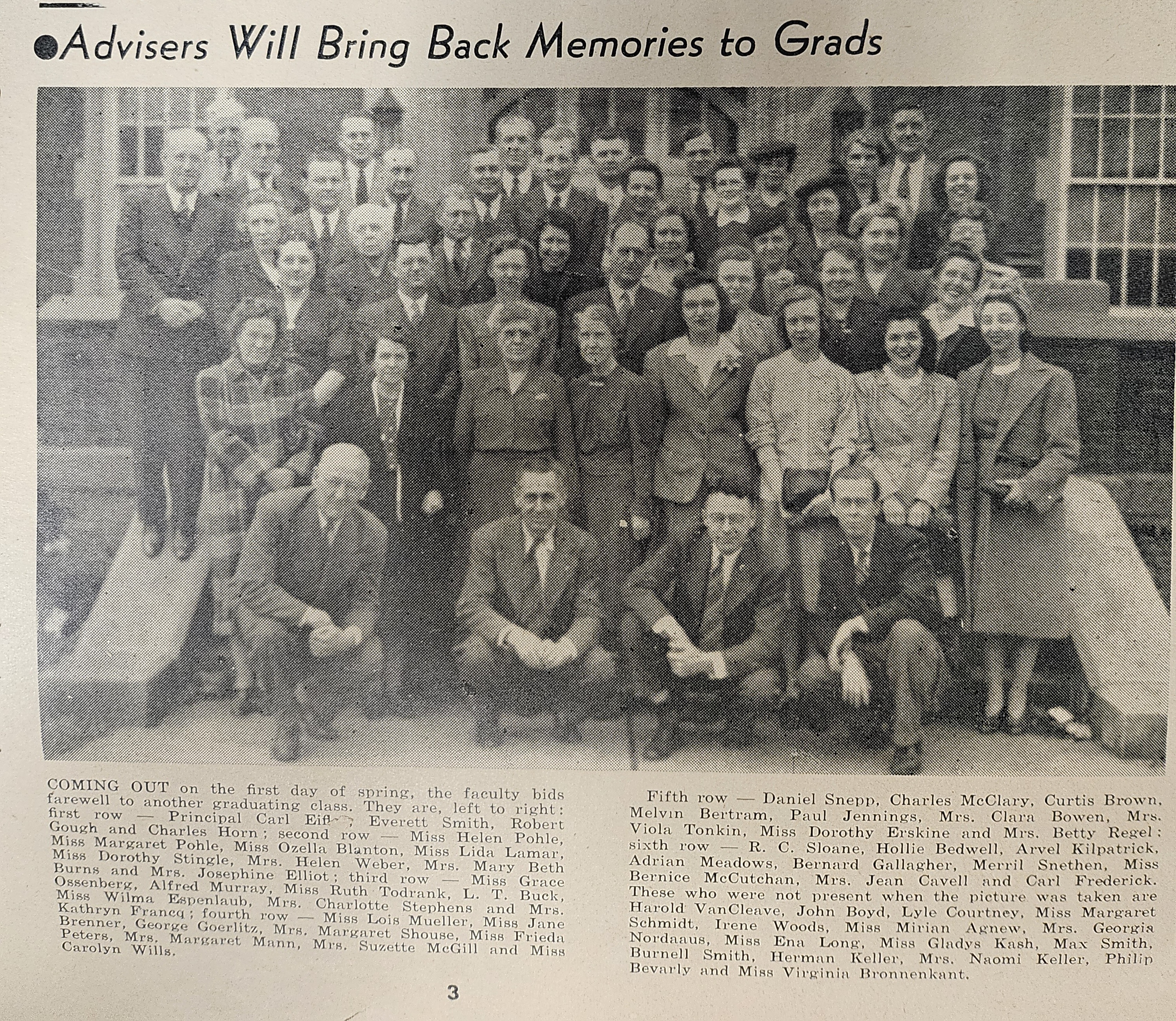
Courtesy of Evansville-Vanderburgh School Corporation.
1955 John was President of WMI from 1 October 1955 to 25 May 1960.
1957-58 Josephine completed library sciences courses from Indiana State University, Terre Haute. This was in an extension program located at the Evansville College (now University of Evansville).
1958-60 Josephine was the Librarian at WMI. In an article in Evansville's The Sunday Courier (27 December 1987), Roger McBain explains that In 1958, the institute needed a librarian. Its board of directors wanted Mrs. Elliott, but the board's chairman refused to hire his own wife and left it up to the board.
McBain then quotes Josephine, And so they came over to the house, (John) went upstairs to the bedroom, and the board members hired me to be the librarian here.
1960-62 The Elliotts lived in Chicago. John was executive vice-president of Majestic Masonry Co., and Josephine was a secretary in the Special Collections Department of the library of the University of Chicago. Later, she noted that this experience prompted her interest in becoming an archivist and historian.
1962-63 Josephine completed summer courses in library science at Indiana University, Bloomington, Indiana.
1962-65 Josephine was the librarian at Hedges Central Elementary School, Mt. Vernon, Indiana (closed in 2015), about 14 miles south of the Elliott farm.
1965-72 Josephine was the librarian at Mt. Vernon High School.
1968 John began teaching anthropology at Wabash Valley College, located about 30 road-miles northeast of New Harmony.
1972-78 Josephine was the archivist at Indiana State University (ISUE) at Evansville, now University of Southern Indiana (USI). Just seven years before Josephine became the first archivist at ISUE, the school had been created as a branch campus of Indiana State University (ISU); in 1985 the name was changed when the institution became independent of ISU. The position of Archivist at ISUE/USI was made possible by a $30,000 grant from the Eli Lilly Foundation. Today, the USI University Archives and Special Collections houses a wealth of historical records about American communal studies, including the Rappite and Owen-Maclure communities in New Harmony.
1973-78 John was director of the ISUE summer field school in New Harmony.
1975 John was editor of Contest for Empire, 1500-1775:Proceedings of an Indiana American Revolution Bicentennial Symposium, held in Thrall's Opera House, New Harmony, 16 and 17 May, 1975. This 95-page book, published by the Indiana Historical Society, includes five essays by historians. As Symposium Director and President of Harmonie Associates, John opened the symposium. His eloquent four-page Preface for the Proceedings includes these words: My wife, Josephine M. Elliott, deserves unmeasured credit for the help she gave every step of the way.
1979-85 Josephine was the archivist at WMI. In 1978, she had helped obtain grants totaling $36,000 from the National Historical Records and Publications Commission to catalogue the manuscript collection at WMI.
1979 On May 12, Josephine Mirabella Elliott and John Bennett Elliott were each awarded the honorary degree, Doctor of Laws, by the ISUE (now University of Southern Indiana). The USI Honorary Degree Policy states, An honorary degree from the University of Southern Indiana is the highest form of recognition granted by the institution.
The program for the occasion listed their current memberships: hers, the Indiana and American Society of Archivists, National Historic Communal Societies Association, and Indiana Oral History Roundtable; and his, the Society for American Archaeology, Wabash Valley Archaeological Society, New Harmony Memorial Commission, New Harmony Plan Commision, Harmonie Ahead, Inc., and Gresham Creek Watershed Conservancy group.
1991 At the University of Southern Indiana, the ongoing annual Dr. Salvatore F. and Rosamond L. Mirabella Achievement Award was started; see Scholarships and Aid.
1994 Josephine received the Indiana Humanities Achievement Award for Scholarship, from the Indiana Humanities Council. 2001 On 6 June, John died in New Harmony. He was interred in Maple Hill Cemetery. 2002 On 28 April, Josephine died in New Harmony. She was interred next to John in Maple Hill Cemetery.
Yesterday when we were at the audience with about 350 people present . . . an aisle was made so that the pope [Pius XII, then 79 years old; see List of Popes] could walk down the aisle and as he went he asked the women which state they represented. He went to the end then turned around and came back—Claudia was standing . . . He stopped touched her hand to bless the articles in her hand then asked her — "Are you a student, she said yes, what are you studying, — she: arithmetic grammar etc — He — have you graduated, then Etta Gillies who was in front of her answered him—No, Holy Father—she is only 13 years old — He said ah yes she is still young—Are you a good Girl Etta's answer "yes father she is good" — you can imagine how thrilled your daughter was and how surprised every one else was that he would stop and single her out and talk to her.
Now, twenty years later, I find myself being about as wrong as I could possibly be in my predictions for you. You were to become a poet and writer, poor, unmarried, and creating deathless literature. Instead you are obviously a fine university administrator, commanding an excellent salary, a paterfamilias, and writing —Josephine may have just re-read her copy of a 60-line poem on which she had penned these words:
Written by Arthur Heiserman at age 15, and given to Josephine Elliott, his English teacher, November 6, 1944.Lines 6-10 and 55-60 of "The Fall" follow:
In a letter dated 2 July 1948, Heiserman, having graduated from the University of Chicago two weeks earlier, writes to Josphine:Season of leaves, leaves, leaves, leaves, leaves;
grotesque, drained corpses, wrinkled like
grandmothers floating free in death from
their employers; magnificent unmanned facto-
ries, wanted no longer;Shall I join the leaves?
O weep, weep, weep!
O shrik, shriek, shriek, and moan!
No, I shall droop my heart and mutter;
"Ever the spring; Ever the spring!
I shall mutter a lie: "All time is spring."
So what have I got? the best education money can buy and a very refined confusion . . . I am now a liberally educated man . . . I can take each fresh event, classify it, place it conjunctive-disjunctively in a spacio-temporal continuum, call it definitely either, operatively, cause or effect. I take action only on the basis of the essential relations of things, integrating esthetics and ethics by adopting only a modality of practice involving a recognizable beginning, middle, and end.
Three years later (13 January 1951), Heiserman writes: Life goes on day to day, god help us, and most of it is pretty much a dish-water affair. Only the mind and the imagination provide the relief they themselves demand, and the relief is by nature seldom and short. Don't you think so? All we can ask for is solitude and a heart stupid enough to believe in its own worth long enough to create. Life and creation are the levees against the surrounding flood of mindless death, and the creation of the mind is the only proper exercise of man. It gives the most pleasure and exacts the most pain, and is life for us . . .
(Notably, an unofficial motto of the University of Chicago is Life of the mind.) In a different vein, Heiserman concludes his letter thus: My wife [Virginia] and child [Regan] are fine and yesterday Regan rolled over by herself. What to do next year? Any essential farm-work down there? I mean essential enough for a draft-board to know about it? . . .I bet Claudia has boy-friends and goes to dances. Are you thankful you live in a very safe place? You ought to be, for I fear your beloved Chicago may one day soon go BOOM.
Returning now to Josephine's 1966 notes, she writes, And speaking of writing, I should like to have you grant me one favor if at all possible: next summer when I'm home visiting Mother, would you allow me to see the ms of your New Harmony book since it seems—forgive me!— not to be imminently in danger of publication. I would be so interested to read it.
As Heiserman's New Harmony book was never published, and as some of his published works were no doubt read and cherished by his high school English teacher, they are listed here:
J. D. Salinger: Some Crazy Cliff
, (with James F. Miller, Jr.), Western Humanities Review, X (Spring 1956), pp. 129-137. First sentence: It is clear that J. D. Salinger's The Catcher in the Rye belongs to an ancient and honorable narrative tradition, perhaps the most profound in western fiction.
The Castle at Arundel
, Harper's Magazine, March 1961, pp. 73-78. First sentence: I spent the night at Chicheser and in the morning hitchhiked to Arundel.
Online: from Internet Archive.
A Shabbas-Goy
, The Kenyon Review 25 (Summer, 1963), no. 3, pp. 417-434. First sentence: Since breaking his left arm and collarbone by falling ten yards down Squaw Peak in January 1939 (this is his fifteenth year, his sixth January in Arizona, where his mother had taken him to tend an asthma which had disappeared in 1937), Elliott Johns had a tendency to walk sideways like a trotting dog—a tendency noted somewhat cruelly by his prefect at the Dominican House of Studies where he had spent most of the war: "Johns, you move into Chapel like a real canis Domini; we'll send you to Yugoslavia, where the Dalmations come from."
Online: from JSTOR.
A Short Story about Saints, Priests, Races, Etc.
, The Kenyon Review 27 (Summer, 1965), no. 3, pp. 463-475. First sentence: Twenty pounds of The Hexaglot Bible, Vol. V, The Gospels, Etc. hung from Stulka''s heart toward Lucid's. "Ahungh?" asked Lucid.
Online: from JSTOR.
Schachtmann's Calf
, Mademoiselle 55 January 1962, pp. 145, 184, 188-191. First sentence: One October morning when Zimmer heard the phone ringing downstairs he almost opened his eyes.
Peaks And A Valley
, The Nation, 27 June 1966, pp. 788-789. This is a review of Renaissance and Revolution: the Remaking of European Thought, by Joseph Anthony Mazzeo, Pantheon Books. First sentence: Professor Mazzeo's brave excursion through "the intellectual backgrounds of the literature of the Renaissance" illustrates the fascination with the Renaissance begun in the Renaissance itself.
Heiserman's first of two books is Skelton and Satire, published by the University of Chicago Press in 1961. The 326 pages include seven chapters, the first of which opens with these words: A few months before his death in June, 1529, the Rev John Skelton launched a satire against "certayne yong scolres" who had succumbed to the heresies of Martin Luther.
His second book is The Novel before the Novel: Essays and Discussions about the Beginnings of Prose Fiction in the West, published by the University of Chicago Press, 1977. The Preface notes that The present volume is designed as the first of three books that will attempt to trace certain persistent habits of art in long narratives written in the West between the third centurey B.C. and the seventeenth century A.D.
Unfortunately, Heiserman died just sixteen days after finishing the book on 23 November 1975. The chapter titles are (1) Erotic Suffering, (2) Resourceless Jason, (3) Discussion One, (4) Bits and Epitomes, (5) Discussion Two, (6) Aphrodisian Chastity, (7)
Discussion Three, (8) Antonine Comedy, (9) Discussion Four, and (10) Divine Romance.
Biographical notes Arthur Ray Heiserman, born on 10 January 1929, in Evansville, Indiana, was the son of Arthur Ray Hesierman and Anne Weisman Heiserman. He received three degrees from the University of Chicago: A.B. in 1948, A. M. in 1951, and Ph.D. in 1959. Heiserman married Virginia Ruth Martin on 17 October 1950, and they had five children: Regan, Lisa, Gina, Alison, and Arthur. He taught at the University of Nebraska, 1952-54, and the University of Illinois, 1954-55. In 1959, he joined the faculty of the University of Chicago, where he became an associate professor of English in 1963 and professor in 1965. He was a Guggenheim fellow, 1963-64. At the University of Chicago, his administrative positions were Director of Academic Programs of University College, 1956-59, Director of Summer School (1959-61), Associate Dean of University College, 1961-63, Master of Humanities College, 1965-67. He died on 9 December 1975. For additional biographical information see Interview for The Maroon, 29 October 1965; Tribute in Critical Inquiry 2, no. 3, Spring, 1976; Guggenheim Fellowship, including portrait; and Preview of Displaced Persons, by Heiserman's daughter, Lisa Heiserman Perkins; includes picture.
Arthur Heiserman's letters to Josephine preserved in WMI indicate that they knew each other very well. While there may be no documentation that Josephine was instrumental in Arthur's matriculation at the University of Chicago, he does write this, in November, 1949: I have an overwhelming feeling of debt and gratitude to you and your interests in me.
In 1974, Josephine wrote the Foreword to a novel, The Holy Experiment, by Lois T. Henderson. The book was published by Exposition Press. The Foreword, reformatted, follows:
Articles and Books:This is a captivating account of a real girl whose life spanned the three most important periods in the history of the Harmony Society. Though fictionalized, the narrative follows historic events very closely and successfully capture the essence of Harmonist life and thought. By careful use of existing documents, Lois Henderson has not only recreated the Harmonist spirit, but she has skillfully depicted a beautiful, innocently seductive, impulsive and warm human being in the person of the lovely Harmonist, Hildegarde Mutschler. The reader (even one such as I who has worked extensively with the local documents) is caught up immediately in the absorbing story of a sweet and poignant romance, and puts it aside reluctantly at its conclusion.
The Owen Family Papers,Indiana Magazine of History 60, no. 4, 1964, pp. 331-352. Online: Indiana Magazine of History.
To Holland and to New Harmony: Robert Dale Owen's Travel Journal, 1825-1826,Indianapolis: Indiana Historical Society, 1969. Online: Internet Archive of History.
Preliminary Guide to the Special Collections of Indiana State University Evansville, published by Indiana State University Evansville (now University of Southern Indiana), 1975.
New Harmony, Indiana: Robert Owen's Seedbed for Utopia,Indiana Magazine of History 76, no. 3 (1980), pp. 161-261. Online: Indiana Magazine of History.
Madame Marie Fretageot: Communitarian Educator, Communal Societies 4 (1984), 167-182.
In Search of the Real Maclure,Indiana Magazine of History 94, no. 2, 1998, pp. 85-88. Online: Indiana Magazine of History.
William Maclure: Patron Saint of Indiana Libraries,Indiana Magazine of History 94, no. 2, 1998, pp. 179-190. Online: Indiana Magazine of History.
Archival Holdings in Southern Indiana,Indiana Magazine of History 94, no. 3, 1998, pp. 240-259. Online: Indiana Magazine of History.
This book was supported by a generous grant from the University of Southern Indiana, Endowment for New Harmony Studies.Reviewed by Gerald L. Gutek, Indiana Magazine of History 96, no. 4, 2000, pp. 359-360. Online: review. (Jane Thompson Johansen was an associate professor of Information Systems and Business Education at USI, 1969-2014.)
Indiana's First Utopians, 1814-1824,Indiana Magazine of History 75, no. 3, 1979, pp. 225-340. Reprinted by Historic New Harmony: University of Southern Indiana, 2002. Online copy of the 1979 printing: Indiana Magazine of History.
The correspondence consists of 479 letters, beginning soon after William Maclure and Marie Duclos Fretageot first met in Paris in 1819, and ending with Fretageot's death in 1833. The prefatory sections of
One: As the old cock crows the young cock learns.
Two: The Pestalozzian system . . . the best I had seen for the diffusion of useful knowledge.
Three: The two men for whom I have the greatest esteem.
Four: It was not Owen who deceived me but my enthusiam for the Community system . . . .
Five: The more I have to do the more pleased I am.
Six: Absence is an enemy to the best friend.
Seven: I am yours until my last breathing.
The chapters (pages 21-1044) are followed by eleven Appendixes, followed by Bibliography, Index, and Map of New Harmony, 1824-32. Each chapter opens with an introduction and is interspersed with notes and pictures, all of which are recognized—in the reviews listed below—for their quality, detail, and usefulness to historians.
Reviews of Partnership for Posterity:
(1) Joseph G. Mannard, Journal of the Early Republic, 15, no. 3, (1995), p. 528. Online:
JSTOR.
(2) Gerald Gutek, Communal Studies 15, (1995), pp. 134-136.
(3) Edward K. Spann, Indiana Magazine of History 91, no. 2 (June 1995), pp. 228-229.
Online: JSTOR.
(4) Ted Stahly, History of Education Quarterly 37, no. 4 (1997), pp. 436-437. Online:
JSTOR.
Much of the archival correspondence at WMI is accessible online—but not the Maclure-Fretageot correspondence, which is classified separately as Series IM in New Harmony Manuscripts, 1812-1871. Nevertheless, you can browse what is accessible: start with Series 1, and use Ctrl-Find in the body of text (not the box labeled "Search within this document:") to search the name Josephine. The result will indicate the remarkable extent of Josephine's work as a cataloguer, and it will also lead to samples of the handwriting of William Maclure and Madame Fretageot. The sometimes difficult penmanship, together with unusual spellings, missing punctuations, and grammatical improvisations, reveal what an enormous task it was for Josephine to edit the Maclure-Fretageot .
Although the letters in Series IM are not available online, an itemization with dates locations, and numbers of pages is available: New Harmony Series IM.
Josephine is quoted in Robert McBain's article in the Evansville Courier (4 September 1994), For anyone who reads people's letters and papers like this, they become alive. These are very real people to me — I know these people a lot better than those ones who are walking out there on the street . . . This is my life's work. I love doing it, and it's needed — there is not a much better combination, don't you think?
At the conclusion of the Acknowledgments section in Partnership for Posterity, Josephine writes this: Most of all I thank my husband John for checking, typing, and proofreading chores; supplying critical judgment; and offering infinite patience and understanding.
